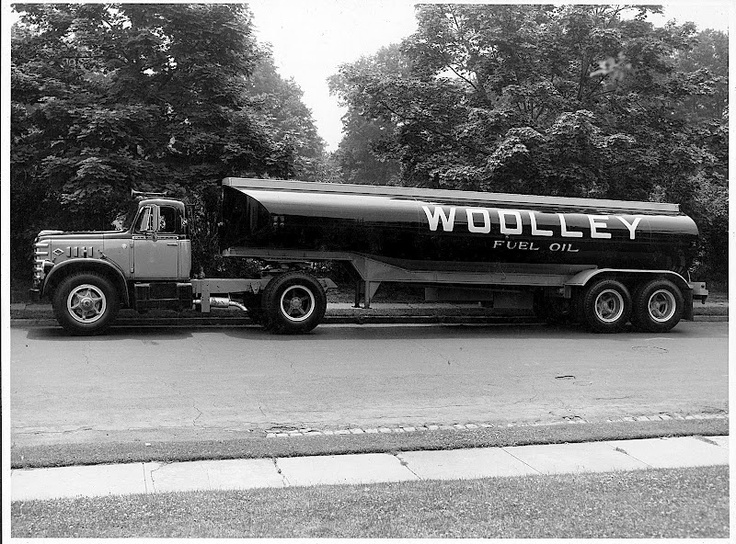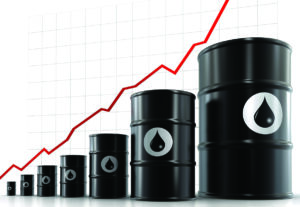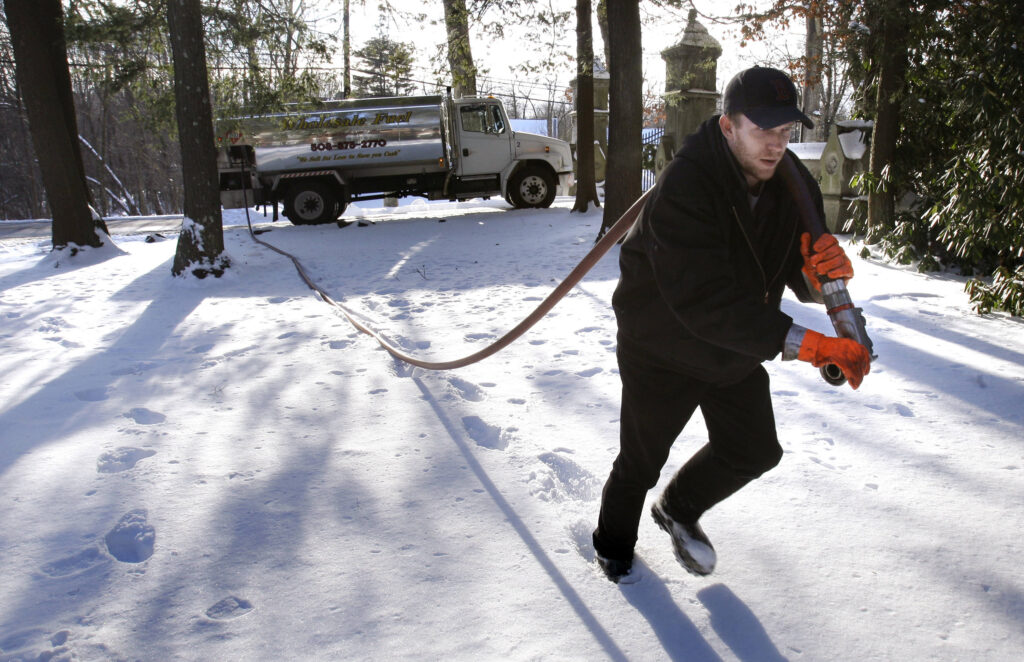Fuel oil dealers are used to dealing with challenging situations:
• How do I find enough drivers?
• If I drug-test everyone, will I have enough staff?
• How can I make enough money if I keep hearing from my customers that my prices are too high?
• How do I compete with “the big guys?”
These and many more questions are often very logical but nearly impossible to answer. In order to compete, you need to level the playing field; in order to win, you need to tilt the odds in your favor.
Making the change
Over the past few months, we have been focusing on different methods to improve aspects of your business including remote monitors as well as route optimization processes and software. In all cases, there are costs associated with achieving benefits, and there is also a good deal of uncertainty. Questions such as these can arise:
• Can I really change my Optimal Delivery?
• Will my technicians actually install monitors?
• Will I get the return on investment that I hope for?

It is always easier not to change things, especially if the amount of work required to achieve the results might not get done. How many times have you heard, Sure, that’s a great idea but I’m not sure when I‘ll have time to do it?
We all want better results, and even more so, we want them to happen without us having to put in a lot of effort or dramatically changing the way we operate. The old adage good things come to those who wait doesn’t hold water in our ever-changing, technology-charged world. It’s more like if you snooze, you lose. Increased profits will not happen by waiting around and it certainly won’t happen if you don’t modify your (and, by extension, your staff’s) behavior.
Without rehashing all the moving pieces, you should soon be in a position to decide whether you: like the size of your business and want to make just a little more money operating it, or would like to make a lot more money using the same assets and resources that you currently have.
Evolution
Change is scary, and not changing can be even scarier.
• 40 years ago, as your company (if it was around) was transitioning from the “file room” to a back-office accounting system, you got a lot of push-back. Really, who wanted to type on a keyboard when all a person had to do was to scribble a note on a piece of paper and put it the file (after photocopying the check that just showed up in the mail!)?
• 30 years ago, you didn’t offer anything but “a fair price and good service.” There weren’t any pricing programs that have now become the industry’s biggest retention tool.
• 20 years ago, the thought of a customer going online to make a payment—without interacting with anyone in your company—would have made your bookkeeper scream.
And 10 years ago, how opposed were your drivers and dispatchers to the notion of on-board computers?
Industries do change, even ours, perhaps slowly. Every industry evolves or they cease to exist. In the not-too-distant future there will be technology “haves” and “have nots” in our industry regarding the best method to make deliveries (while not allowing for run-outs).
In the future, deliveries will be fewer and bigger. Summer deliveries will be a different size than the winter deliveries. High-K factor customers will be treated differently than others and your fleet will not spend nearly as much of the year sitting idly waiting for that “cold week in January.” Most importantly, it will all happen with the push of a button.
Old School customer care, employee training and “soft skills” are as important today as ever. However, companies who take those to the extreme, who say the way they operated 20 years ago was the perfect way and believe there is no need to take advantage of today’s technology, might find themselves searching for their old Hall & Oates mixed tape to comfort themselves when the competition heats up.
Panic? Absolutely not. Plan? Absolutely. ICM
Over the past few years, as Angus Energy has expanded its legacy hedging-based business into the broader approach of What can we do to help our clients run more efficient and profitable businesses, the company has spent a lot of time focusing on business intelligence and remote monitoring offerings. The base premise is the more you know about every aspect of your business, the fewer surprises you will have and the better positioned you would be to use that information to make better decisions.
If you look at the expense pie that consists of customer acquisition costs, selling, general and administrative expenses (SG&A) and delivery costs, the biggest expense for any fuel oil retailer is the cost to make deliveries. It requires many vehicles—most of which sit idly for most of the calendar year.
It requires one of the hardest-to-acquire commodities (truck drivers), especially those who are not actually driving for the full year. It also requires a lot of fuel, fleet maintenance, unscheduled repairs, insurance premiums, tire replacements, dispatchers, on-board computers, routing expertise, etc. Although this is widely known, the industry hasn’t done much to make deliveries more efficient over the past few decades, but that is starting to change.

Remote monitoring and routing software help to create the most optimized schedule for your drivers.

There is more technology at our fingertips than decades before, making it easier to calculate and predict customer needs.
To accomplish anything in the business world, you need a mixture of know-how, foresight and tools. The battle between know-how (sometimes referred to as “experience,” other times referred to as being “old school”), and forward-thinking (sometimes referred to as “next generation thinking,” sometimes as “these kids don’t know anything”), is challenging. The choice presumes that you need to be either completely retrospective (why innovate when everything seems to be working?) or completely prospective (look at all the new technology that is available, to heck with the old school thinking).
I prefer to have the conversation start with the notion of being introspective. In our digital world, choices are usually presented as either/or rather than as a balance of perspectives. Simply because something is “old school” doesn’t mean it is bad or even outdated, it may well have become common practice because it was and still is the best way to do things. On the other hand, just because something looks futuristic but may not be guaranteed to succeed doesn’t mean it is not worth exploring.
The best tools
Over time, all industries use the best tools that are available to them at that time. Toll collectors were replaced by EZ-Pass systems, on-site server rooms were replaced by “in the cloud” services and beepers were replaced with Smart phones. While your parents or grandparents may have struggled with moving from file folders and index cards for customer accounts and K-factor deliveries, they eventually moved to a back-office accounting system. That change didn’t mean that index cards were ever bad, but over time, they simply were not the best tool.
Every time there is an improvement in the available tools, lengthy discussions ensue as to their benefits and value of changing “the way we’ve always done it.” Never lose sight of the fact that change is not easy for many people or for companies. All change, as simple and logical as it may seem, will raise challenges. It is almost always easier not to change, yet it is also almost always a mistake to push off beneficial changes.
Although we take pride in the fact that our industry is very hands-on and customer-facing, not nameless, faceless and algorithmic, we have always embraced change—from back-office systems to on-board computers, from email communication to on-line customer enrollments, and so on.
Did your grandfather ever imagine his customers would receive a “push notification” alerting him that there was a service tech arriving in the next 30 minutes? Yes, we take our time, we wait for other industries to lead the way, but the windows of adoption are shrinking. For those who embrace new tools, the competitive advantage and positive impact are growing more quickly than ever before.
Finding the right balance
When quality drivers are hard to find, you can either spend more money to retain and attract them (while likely lowering your standards) or you can find a way to deliver the same number of gallons with fewer drivers. If the price of gasoline and diesel fuel for your fleet is both expensive and unpredictable, you can just “pay whatever it costs” or you can look to hedge your fuel costs and do a better job of routing than just letting the driver decide on the order of deliveries.
Your biggest delivery expense is the cost of a truck—whether used all year long or just for a few routes in the winter. However, the argument that you needed to buy those three trucks otherwise the acquisition wouldn’t have gone through is not an excuse to keep those trucks in your fleet if they are no longer needed.
Delivering 150 gallons in January to customers whether they have a K-factor of three or 13 is going to require more trucks, drivers and wages than if you pushed or pulled back the “13” into a shoulder month. Also, if 150 gallons is the right delivery size in January, is the same true in May?
Technological changes
The biggest changes in technology are not changes in philosophy. There was always a desire to make the biggest deliveries with the fewest trucks, lowest wage costs and least amount of fuel—all with the absolute requirement of have little or no run-outs. None of that is new. What has changed is that the tools to accomplish that have become far better and more affordable.
If you knew what was in a tank, your deliveries would be far more predictable. If you knew the best route, you would make more stops per hour at a lower cost per delivery. If you knew the best times to make deliveries to customers—not based on when there was enough room in the tank, but based on using the data you already have to spend the least amount of money, while not increasing the run-out risk—would you change the way you operate?
It is already happening and it will happen to your company. The question is whether you will “lead” and look to do it or “follow” because you must. Bridging the past and future requires introspection. Introspection requires the ability to identify the benefits of having a better, more profitable, more valuable business, not the excuses of why you should just keep waiting. ICM
If you ask a heating oil dealer for the one thing they would wish for in December and January, my guess is that nine out of 10 would hope for frigid temperatures. The 10th might be someone like me, holding out some misguided belief that his or her team could beat the Patriots in an important late-season game!
Last winter those wishes came true, and along with it was heard the common phrase: Be careful what you wish for. Cold weather is great. Cold weather is welcome. Cold weather is necessary. However, too much cold weather, especially without a break, can tax the delivery systems of companies despite the best forms of planning.
Always Up for a Challenge?
The late-December through mid-January cold snap in the Northeast in 2017 led to a series of challenges. Although most were predictable, they ended up being problematic for dealers. In some cases there were run-outs, in many cases there were fears of run-outs. We saw a lot of homes that simply couldn’t get or stay warm (insulation issues?) and equipment failures that were more common than anyone would have liked.
When it came to the frustrations of run-outs, a lot of people simply pointed to the growing use of remote monitors as a way to know which deliveries were needed, and (of equal importance) which deliveries were not needed. I fervently echo those sentiments and believe that remote monitoring of tank levels would have gone a long way to impact and lower the number of run-outs.
However, I wanted to look at this from a different, perhaps supplementary, angle. I had many conversations last winter about the impact of those few weeks, and how, despite the high number of heating degree days (HDDs), the “damage” it caused really impacted the entire years’ profits and losses. Very often within those conversations, there would be a comment along the lines of: Of course, we knew that there would be run-outs, but I had my guys working 14 hour days, seven days a week. There was simply no way to keep up with the demand. Sure, tank monitors would have helped, but the trucks were out all day long, and we simply couldn’t get to everyone. In other words, the need simply outweighed the ability to deliver.
Supply and Demand
The logic is there. Just too much demand. Really, what could have been done differently? Without the ability to use Uber to request a delivery truck, how do you meet the needs of your delivery tickets when it has been cold for so long?
We have been thinking about deliveries for a long time and wondering why the process of planning hasn’t really changed that much over the years—while all other technologies and efficiencies seem to have improved.

The low temperatures of late 2017 and early 2018 caused major industry supply problems.
The transition has been coming for several years, and it is now as stark as ever. There is a line of demarcation that separates the companies that are stuck in the past or are trying to catch up and those that have embraced the future.
We speak with hundreds of fuel oil/propane dealers every month. Shockingly, we still hear the familiar refrains:
While that is indeed the mindset of some dealers, we believe that much of the resistance is simply the fear of change. Doing things the same way for years, decades even, can lead to comfort and complacency. I’d like to believe that there isn’t really opposition to beneficial change in the form of improved decision-making, efficiencies and profits. For some, however, it’s just too damn scary.
With all decisions, especially game-changing decisions that can impact your business for decades, a good deal of confidence is required. If you are not confident in the decisions you make, it is very easy to find problems and simply say: I knew that wouldn’t work. You need to feel confident in the decisions you make and the expected improvements.

Embrace the forward-looking decisions that you make
Whether you are aware of it or not you, you have embraced change, especially in the form of new technology. As with many things in life that seem to just “happen,” the changes might not have been fully planned, but the improvements have worked out.
Best Practices
Since the future is inevitable, I want to share with you Best Practices we’ve witnessed and coached other dealers on as they proceed through the adoption of new technologies, in order to make the transition more predictable:

Always communicate changes with the entire organization, not just customers.
Plan, execute, communicate and gain the confidence needed in this not-so-new millennium! ICM
As the owner or decision-maker of a company, one of the most important things that you need to do is prioritize your time. Very few people can be experts in sales, marketing, operations, purchasing, hedging, service and technology, yet those are just some of the important aspects of your business fighting for your attention. In addition to the obvious advice of hiring the best people for the job(s), you need to optimize your time, and of equal importance, be aware of and avoid things that you should not be spending time on.

One of the most important tasks is to identify what not to spend time on.

See what you can do better, not speculate too much on oil prices.

Instead of trying to predict the future, put a plan in place.
For decades, there has been talk of running a more efficient business. Finance departments want budgets and price cap programs. Delivery departments want to increase their delivery size via remote tank monitors and to use routing software to maximize their “gallons per hour.” Sales departments want to “target” customers most likely to sign up and (even more so) most likely to stay. Lastly, service departments want to hire techs that have the fewest “call-backs,” and in general, have as few service issues as possible. As technological improvements continue to trickle down from big companies to small companies and as they seep into every industry, we have seen a dramatic jump in the way that oil companies are embracing the new (and the not-so-new).
We have spent a good part of the last two years working on various ways to use the “treasure troves” of data that companies have (or at least have access to) to help them better predict what might happen in the future. Using data to report (business intelligence) and history to learn from (machine learning), we have come to realize what we likely already knew: customers are fickle. They want good service and they want to pay a fair price. We also have learned that certain customers are more likely than others to leave over a nickel per gallon, while others will be loyal to you forever. We have identified the value of budget plans, automatic delivery and price cap programs. While we all intuitively knew the value, putting it into actual numbers and dollars validated some assumptions, while debunking others. New “science” has enabled us to better predict which customers are more likely to fall into which buckets as it applies to retention and attrition.
Depending on Data
Since the biggest asset on a balance sheet is often a customer list, knowing through predictive analytics which customers should be targeted for proactive measures (to keep them from leaving), and which customers should be shown the door, can do a great job in maximizing the value of that asset. Breaking down the data is left to the data scientists, but when you have tens of millions of discrete data points, it is good to know that there is computer processing power that can turn all of those seemingly random data points into actionable behavior.

The biggest expense after the cost of delivering fuel is the cost of running a—usually not-for-profit—service department. Aside from the scheduled annual cleaning, almost all visits to customer homes are for something that is going (or has gone) wrong—not counting installation work, which should always be profitable. It could be a funny smell, a weird sound or a room that just won’t get warm. It also could be for an absolute shut down of equipment—the dreaded “no heat call.”
Predictive Modeling
One of our clients tasked us with using “predictive modeling” to see if they could learn anything relating to service and how to be more predictive and proactive. Since each company tracks service calls (reason, parts, time, notes, etc.) differently—as opposed to simply a yea or nay on “is the customer active”—there was a lot of cleaning up of the data to do. With this type of analytics you don’t want too many variables, but you also don’t want too few. We are considering not only the service call and the age and usage of the equipment, but also the time of year, the weather (both cumulative heating degree days [HDDs] as well as weather anomalies, as in this past December and January).
We found, not all that surprisingly, that customers who had a summer cleaning were far less likely to have a no heat call. We also found that customers who replaced certain parts prior to their planned “age of expected failure” also had fewer instances of equipment failure. Most importantly, we see some indications that although service issues don’t generally lead directly to attrition, unless is it a very high number of calls, if you want to keep a customer, showing up either once or twice a year seems to be a surefire way to increase retention.
The Results of Results
Although it is early in the process, a few things are very clear. The first is that most companies need to do a better job at using their back office systems (BOS) to track everything related to service—dates, parts, costs, hours, etc. That is true whether for an installation, a simple cleaning or a middle-of-the-night problem. If you don’t have the data, you can’t expect to learn from it.
Another thing that we believe is that given enough data and enough history (you should already have both), you should be in a position to better predict the likelihood of those unscheduled service calls.
No predictive analytics can truly eliminate risk or perfectly predict what will happen, but before dismissing data (business intelligence and predictive/prescriptive analytics) as something your grandfather would have scoffed at, imagine if you could use the data you already own to:
• Focus on which customers were going to stay, which would leave, and then decide how to act;
• Focus on more efficient deliveries—K-Factors and remote monitors are, effectively, predictive as to the next needed deliveries and;
• Focus on where to expend your service efforts, such as which customers don’t really need the summer cleaning and which customers do.
How much better might your balance sheet look if those predictive factors resulted in increased profits each and every year? ICM
What do the following items all have in common?
The most common thing is they are all core technologies that are embedded in almost every distribution company, and most companies couldn’t compete or survive without them. The other common theme is they weren’t around when your grandfathers started the company.
However important and obvious the value of these necessities—and other “basic technologies”—the truth is that each was purchased for the company with a degree of insecurity as to the understanding of the technology, the need, process changes required, the potential impact to the company’s operations and whether it was worth the cost. More simply put, the uncertainty about new technology’s impact, combined with the out-of-pocket costs delayed implementation of these items for weeks, months and often times for years.
People rationalize consciously and subconsciously. When you are not certain as to the benefits of something, and you know that you need to write out a check, it’s pretty easy to dismiss the “thing” on the basis of not seeing the benefits. Not surprisingly, as prices come down, people somehow become smarter and more understanding very quickly!
My suggestion is to separate out the “understanding” from the “cost.” If someone understands the benefits of certain types of technology, the only logical obstacle should be the cost (return on investment).
Deliveries are absolutely unpredictable
Whether we understand why or not, the correlation between the Heating Degree Day (HDD) and the gallons consumed—commonly known as the K-Factor—simply do not correlate enough to allow dealers to maximize delivery efficiency. To be clear, the mathematical formulas that make up a K-Factor are correct. However, the implicit assumption that each home consumes fuel at the same rate per HDD ignores customer’s awareness of the cost of fuel, visitors to the home, travel of the homeowners, wind, humidity, etc. In other words, it ignores the real-world items that do impact the consumption.

(AP Photo/Charles Krupa, File)
I will admit that I sometimes smirk when recalling my youth, given how silly people sounded when they said things like “information is power” and “information will be the greatest currency.” It’s not often that people are so accurate when making bold, down-the-road predictions. This time though, “they” really got it right. Data and information do rule the world. This is not meant to say that nothing else matters. Everything we know and love—process, staffing, sales, marketing, finance, customer engagement/service, etc.—all of it matters. However, these elements are all being enhanced by fresh, readily available information and should not be ignored.
Whether you are using the information from The National Oceanic & Atmospheric Administration (NOAA) to plan deliveries for next week or you’re tracking service call-backs on a notebook pad, chances are you’ve become used to getting and using information to make better (“more informed”) decisions on a regular basis.
It would be patently unfair to paint our entire industry with one brush, but we can accurately say there have been several impediments to change. The first stems from the simple notion (especially in smaller companies) that, “if it ain’t broke, don’t fix it.” That statement doesn’t imply a lack of better approaches, but does defer to waiting for disaster before change.
The next issue in our industry, which is a wonderful thing in many ways, is that without a retirement age or any planned transitions, senior management is often earned after a good number of years. Or, better put, those who did things a certain way in the 1970s and 80s are still doing it (or managing it) according to the same methods. There are more challenges in the move to embrace technology, efficiency and optimization, but most fall into one (or both) of the categories previously mentioned.
Since we all know that information is an advantage, why the hesitation? Part of it is explained in the prior paragraph, and part simply relates to the fear of the unknown. We often prefer when others are the first to try on-board computers, remote tank monitors, price caps, new Customer Relationship Management systems (CRMs), cross-marketing other products and services, etc. There’s always time to wait, watch and catch up—without the financial risk associated with those items that don’t work out.
That time—the time when you can wait around to see what others are doing and then quickly catch up—is ebbing away. It isn’t that you can’t get up to speed quickly with new ideas such as diversifying into propane or offering your customers an app to communicate with you. With the ever-increasing speed of data-access and technological advances, however, those “first movers” not only have a head start but greater leads as well.
Some companies pride themselves on having excellent service departments. With improvements in equipment however, that “differentiator” is not as big as it once was. Furthermore, what company doesn’t say that they provide excellent service? Taking it a step further, you could have a service tech for every 300 customers (about twice the industry average), and could potentially provide excellent service with that approach. How would you pay for (and staff) all of those positions, though?
You could, hypothetically, make sure that none of your customers ever ran out of heating oil. That might require more trucks, more drivers and more 80 gallon deliveries into 275 gallon tanks. You wouldn’t run customers out, but how would you pay for the extra deliveries and still make a profit?
Of course, you could sell all of your oil at only 35-cents per gallon above the rack price, include a free service contract and pay $500 for a referral. You would be quite popular…except with your family/shareholders/partners and banks.
There is hardly an aspect of your business that cannot achieve notable increases in efficiency and optimization. You can market and sell better. You can service equipment better. You can deliver better. You can hedge and price better. You can engage your customers—the way they want to be engaged—better. Each of these things is easier to accomplish in 2018 than any time before.
Therefore, the next time you say, “Yeah, that might be a good idea, but I am busy with (fill in the blank),” ask yourself just one question: Is what you are busy with right now more important to the short-term and long-term profitability than embracing the advantage of readily available data and technology?
In all likelihood, the technology that you’re using was state-of-the-art when you purchased it. Your data collection systems (notepads, index cards, Word documents, Excel spreadsheets, databases, CRMs, back-office systems were all adequate at one time. However, there is a good chance that your IT department (or for smaller companies, your “computer guy”) has enough on their plate. Your desire to try some new things can often run into resource constraints with personnel or equipment, for example. That doesn’t mean it should simply end there. Your IT staff can be your best partner, and they can be your biggest roadblock. You need to sit down with them, plan a vision together, and map out how to get “from here to there” before you fall too far behind. ICM